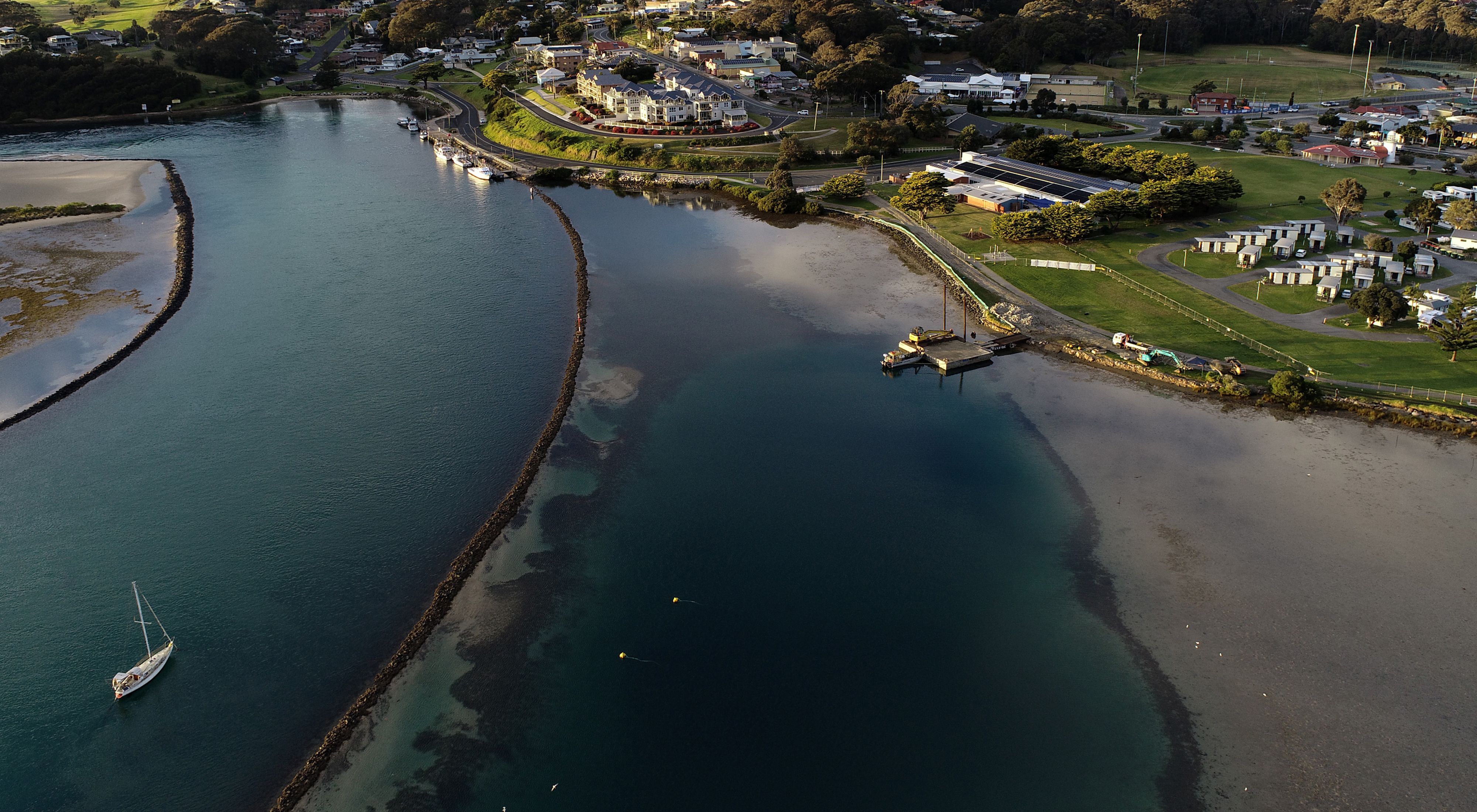Worth its salt(marsh) - construction begins for Living Shoreline project in beautiful Wagonga Inlet
Media Contacts
-
Vanessa Billy
Communications Manager
The Nature Conservancy Australia
Mobile: 0478 638 180
Email: vanessa.billy@tnc.org
The landmark Wagonga Inlet Living Shoreline project is entering a new exciting phase this week, with works to remove a degraded sea wall and restore saltmarsh habitat underway.
The project is a collaboration between the Eurobodalla Shire Council, The Nature Conservancy Australia (TNC) with funding support from the Australian Government’s Reef Builder initiative, the NSW Marine Estate Management Strategy, and the NSW Environmental Trust.
TNC’s South East Oceans Manager, Kirk Dahle, said this new phase is a really exciting time for the partnership and for iconic Wagonga Inlet.
“The improvement of the foreshore follows the completion of the first native flat oyster reef in NSW and the first intertidal oyster reef on the NSW south coast in July last year,” Mr Dahle said.
“The restoration of oyster reefs at Wagonga Inlet will benefit both people and nature. By filter feeding, oysters enhance water quality, and the reefs will provide habitat for marine life, as well as an important natural defence against coastal erosion and damage from storms,” Mr Dahle said.
“We're excited to move onto the next stage of the project with the removal of a degraded seawall and the restoration of saltmarsh habitat along a 400m section of the Inlet.”
“This project is important for the inlet, but also as a demonstration project for nature based coastal protection around Australia,” Mr Dahle said.
Saltmarshes are a key habitat within the estuarine seascape of NSW that have been degraded through human impacts such as foreshore developments, coastal erosion and land reclamation.
NSW Department of Primary Industries (DPI) Fisheries Manager, Jillian Keating said that the project was unique, not only for the benefits it will bring to nature and people in the inlet, but also because it demonstrates the importance of nature-based solutions to coastal erosion.
“The project combines natural elements, such as saltmarsh and oyster reefs, as opposed to traditional concrete and rock seawalls,” Ms Keating said.
“The Living Shoreline will protect the coastline from erosion and support biodiversity and water quality in this beautiful part of the world.”
Heidi Thomson, Natural Resource and Sustainability Coordinator from Eurobodalla Shire Council, said works will also start on new accessways, a boardwalk and a jetty and pontoon to improve public access to a very popular recreation area of the Inlet.
The construction of the jetty is supported by the Recreational Fishing and Camping Facilities grants program.
Wagonga Inlet is one of 13 sites identified for reef restoration under Reef Builder, a partnership between the Australian Government and TNC to bring shellfish reefs back from the brink of extinction and support the economic recovery of communities impacted by bushfires and COVID-19 restrictions.
The Marine Estate Management Strategy is a 10-year strategy which aims to deliver the NSW Government’s broad vision for the marine estate: A healthy coast and sea, managed for the greatest wellbeing of the community, now and into the future. For more information about the NSW Marine Estate and shellfish reef restoration in NSW visit www.marine.nsw.gov.au.
To find out more about Reef Builder and the Wagonga Inlet Living Shoreline project visit our Restoring Shellfish Reefs webpage and the project page on the Eurobodalla Shire Council website.
View and download high resolution footage and images of the project.
The Nature Conservancy is a global conservation organisation dedicated to conserving the lands and waters on which all life depends. Guided by science, we focus on getting things done efficiently and with the greatest positive impact for conservation. We’re a trusted organisation working in more than 70 countries and territories around the world on innovative solutions to our world’s toughest challenges so that nature and people can thrive together. To learn more about The Nature Conservancy in Australia, follow us on Facebook.
